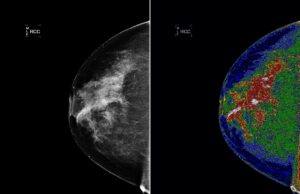With the plethora of information on healthy diets available today, it?s understandable if you?re confused as to what truly constitutes healthy eating habits. Before you start altering your eating routine, it will be helpful to get informed about macro and micronutrients. Of course, your current diet includes macros in some combination, but a lot of people don?t know enough about the other group ? micronutrients, which are present as well. The text below will guide you through both, macros and micros, so you?ll be able to get a better insight into your diet, and adjust it if needed.
Definition and types of macros
Macronutrients, which consist of carbohydrates, proteins and fats, are substances required in a relatively large amount by most living organisms. You need to eat enough of the big three in order to keep your body healthy and strong. There are some schools of thought which favor one group over another, but the fact is in order to achieve optimal health, you?ll need to take in a combination of all three types of macros. Keep in mind that some ingredients contain only one type of macronutrient, while others include the whole trio. Carbs The main purpose of carbohydrates is to prime your body with enough energy to get you going every day, but they don?t last very long. They will absolutely fuel your brain and body with much-needed energy, which is why people love them. Eating carbs can lead to experiencing some craving for sugars, but they are helpful to eat just before a workout, or in case you need a quick boost in the afternoon. If you?re not sure where to find carbohydrates, try plant foods. Besides vegetables and fruits, carbs can be found in grains and tubers as well. Fat If you think of carbs as kindling, then fats are the firewood. Unlike carbs, fats take much longer for your body to burn, and they?ll provide you with sustainable, long-lasting energy. If your goal is endurance, fats will help you to achieve it. By consuming enough fats, you?ll be spared from blood sugar spikes and drops, fatigue, or excessive hunger. A combination of fats and carbs is your best bet since the first type of macros will serve as a good buffer for the latter. While the term ?fats? inevitably brings to mind unhealthy foods, it should be noted that there are plenty of healthy sources of fat such as olive oil or avocado. Protein This group of macros is probably the most popular, and there are a lot of misconceptions following the other two (carbs and fats). Protein is on top of the list because it is proven tobe a critical factor in muscle growth. Regular use of protein will also help you to maintain those newly-built muscles. Proteins are made up of 22 amino acids, the balance of which can affect overall health and well-being. Of course, some proteins have more amino acids than others, and that?s the reason why you should learn as much as you can about them. It can be difficult to consume enough proteins every day for optimal health, , so it?s a good idea to turn to protein powder and supplementsto increase your daily intake.
Recognizing micronutrients
Your body needs a lot of micronutrients as well, and they include all minerals, amino acids, fatty acids, phytonutrients, and vitamins. Everything besides proteins, fats, and carbs are micros. So far, scientists have been able to isolate about 50 essential micronutrients. Our bodies are not capable of creating them, so they must be consumed. It can be hard to determine if you?re taking in enough micros today, but a balanced diet should easily take care of that. Make sure to eat plenty of seasonal, fresh, colorful and organic products and your body will get what it needs when it comes to micronutrients.
Final thoughts
Once you?ve learned as much as you can about both micro and macronutrients, it?s the right time to start planning your future diet. In order to get optimal results such as burning fat and building muscle, weight loss, better overall health, stronger heart and decreased chance for chronic diseases, make sure to contact a professional nutritionist who will be happy to create a customized diet for you. Keep in mind that results won?t come overnight, so you?ll need to be very patient and persistent before you can start buying those smaller-sized clothes. It can be tough to stay motivated to work out and eat just the right amount of micro and macronutrients, but this is where technology can help. There are plenty of apps and smart watches which will help you to monitor your progress when it comes to calories burnt, steps walked, hours slept etc. In addition, these apps will provide you with detailed and precise ingredient tables, so you can always determine your daily intake of calories. All this information can give you the extra push you need to start working out on regular basis and stick to your balanced, healthy diet.








